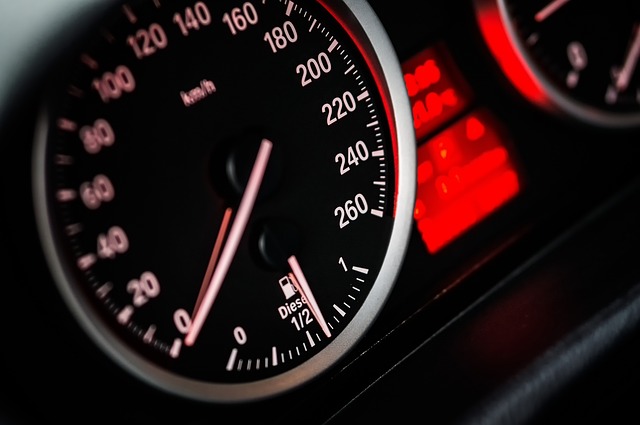Looking to register your car in California? This comprehensive guide walks you through every step, from understanding the DMV’s VIN verification process to submitting your application. First, grasp the significance of a successful VIN verification, ensuring your vehicle meets safety standards. Next, gather essential documents and prepare your vehicle for inspection. Then, complete the California car registration application accurately. Finally, submit it and wait for approval, marking another milestone in your vehicular ownership journey.
- Understanding the DMV VIN Verification Process
- Gathering Necessary Documents for Car Registration
- Preparing Your Vehicle for Inspection
- Completing the California Car Registration Application
- Submitting Your Application and Waiting for Approval
Understanding the DMV VIN Verification Process

When registering your car in California, understanding the DMV’s Vehicle Identification Number (VIN) verification process is crucial. This step ensures that the vehicle matches the details on the registration documents and helps protect against fraud. During this process, a trained inspector will physically inspect the vehicle to verify its condition, including checking for any signs of damage or alterations not reflected in the sales records. They’ll also confirm that the VIN plate is readable and accurately displays the unique identifier assigned to the car by the manufacturer.
The DMV offers both in-person and mobile vin verification services. A mobile vin inspection involves a licensed inspector coming to your location to perform the check, which can be convenient if you’re unable to visit a DMV office. This alternative method utilises technology to streamline the process, providing a faster and more flexible option for California residents looking to register their vehicles.
Gathering Necessary Documents for Car Registration

Before you start the registration process, ensure you have all the required documents. The California Department of Motor Vehicles (DMV) will need several key pieces of information and paperwork to verify your vehicle’s identity and your eligibility for registration. One critical step is the DMV vin verification, which requires the unique Vehicle Identification Number (VIN) to be accurately matched with the vehicle’s details. This process can often be completed through a mobile vin inspection or online, making it more convenient than ever before.
Gathering these documents early will streamline the registration experience and avoid any potential delays. It typically includes proof of ownership, such as a title or bill of sale, current insurance documents, and valid identification like a driver’s license. Additionally, you might need to provide evidence of residency and, in some cases, pay a fee for registration and registration plate fees.
Preparing Your Vehicle for Inspection

Before scheduling your car’s registration, it’s crucial to prepare your vehicle for the necessary inspections. One critical step is ensuring your vehicle passes the DMV Vin verification process. This involves checking that your car’s Vehicle Identification Number (VIN) is accurate and readable, as it plays a vital role in identifying your vehicle during the inspection.
A mobile Vin verification or inspection can be beneficial if you’re unable to visit a DMV facility. This service allows for the same level of scrutiny, ensuring your car meets all safety and environmental standards required by California. By completing these preparatory tasks, you’ll streamline the registration process and avoid potential delays.
Completing the California Car Registration Application

To register your car in California, the first step is to complete the California Car Registration Application. This form requires detailed information about your vehicle, including its make, model, year, and unique Vehicle Identification Number (VIN). The VIN is crucial for identifying your car and is typically located on the vehicle’s registration label or in its engine compartment. Make sure it’s accurately entered during the application process, as errors could delay registration.
A key part of this process involves the DMV vin verification, which ensures the VIN is legitimate and matches the specifications of your car. This can be done through a mobile vin verifier or by scheduling a vin inspection at a designated DMV office. Once all information is confirmed and verified, you can submit your application along with necessary documents and fees to finalize the registration process.
Submitting Your Application and Waiting for Approval

After completing your application for car registration, the next step is to submit it along with all required documents to the California Department of Motor Vehicles (DMV). This process typically involves a thorough vin inspection to ensure the vehicle’s authenticity and history. The DMV will verify the Vehicle Identification Number (VIN) using advanced systems, often including mobile vin verification technologies, to cross-check against their databases.
During this waiting period, it’s crucial to remain patient as the DMV processes your application. Once approved, you’ll receive notification, and your car will officially be registered for road use in California. This approval is a significant milestone, ensuring your vehicle meets all legal requirements and is ready to hit the bustling highways and byways of the Golden State.
Registering a car in California involves several steps, from understanding the DMV’s VIN verification process to submitting the necessary documents and application. By gathering all required paperwork, preparing your vehicle for inspection, and completing the registration application accurately, you can ensure a smooth process. Remember, the DMV VIN verification is a crucial step, so make sure your vehicle meets the standards before proceeding. With careful attention to detail, you’ll be on your way to legalizing your ride in no time.
